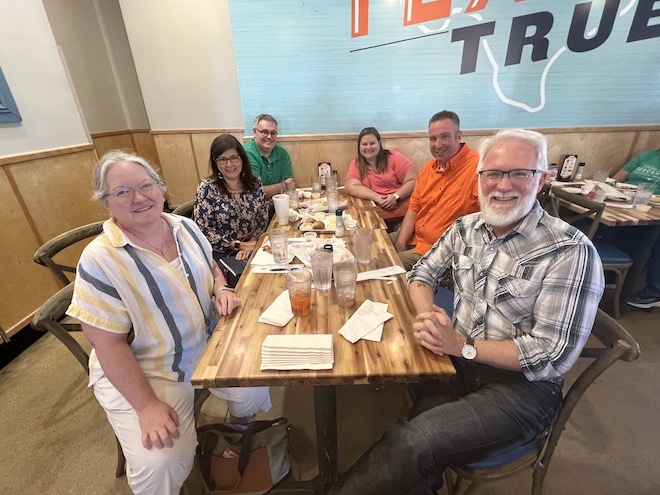
By Lindsay Peyton
What happens when a church decides to disaffiliate, but a member of the congregation wishes to remain United Methodist? A new initiative, launched in the Northwest District of the Texas Annual Conference, plans to address this question and offer a safe haven – “the Oasis Network.” Charter pastors have signed up to welcome those individuals in need of a new church home.
The network is the brainchild of District Superintendent Rev. Charles Anderson. “Sometimes we talk about areas that have almost become United Methodist deserts,” he said. “In a desert, we look for an oasis.”
His mind traveled to the oases of biblical times, which provided temporary places of rest and refreshment to those journeying across a desert to a new destination. The Oasis Network will show the way to congregations willing to serve as resting places for displaced United Methodists.
The Northwest District Oasis Network began forming in late September. Anderson said that he had already spoken to pastors who had confirmed they will remain United Methodist and were ready to open their doors to others – and to minister to them in their time of need.
Seven churches signed on, strategically placed around the Northwest District. Each is confident of their connection and committed to providing an interim place of rest and refreshment.
“They’ve agreed to be intentionally welcoming to United Methodists who at this point are orphaned from their home churches,” Anderson said. “It’s a network concept, where churches can look for ways to work together.”
The Oasis Network includes Lake Palestine UMC in Chandler, Grand Saline FUMC, Grace UMC in Palestine, Rusk FUMC and Canton FUMC, as well as Cedar Street UMC and Fairwood UMC in Tyler. For more information about the Oasis Network, CLICK HERE
Rev. Adam Muckleroy at FUMC said that the Oasis Network offers individuals a resting place while discerning the next step forward. “As they think it through, as a pastor, I’m available and the church resources are available,” he said. “It’s going to look different for each person. We’re going to be flexible, accommodating and attentive to each person’s needs.”
Muckleroy added that the year has been one of fast-paced, historic decision-making. “This offers a pause – so people catch their breath, get their bearings and chart a spiritual path forward,” he said. “I think it offers hope to folks who want to remain United Methodist – and hope that there will continue to be a United Methodist presence in the Northwest District.”
Refer a member
Congregations and clergy who are disaffiliating with the United Methodist Church are encouraged to refer members who wish to remain with the denomination to a nearby Oasis Church. “It’s a cooperative ministry,” Anderson said.
Since establishing the Oasis Network, the Central Texas Conference of the UMC has decided to adopt it. Anderson has also been contacted by other Annual Conferences interested in learning more about the concept. “They have seen it and asked for more information,” he said. “They feel it’s a model that they can use or modify to their benefit.”
In the Northwest District, Anderson explained, there are areas with a significant absence of a United Methodist presence. “The first goal is to make sure that every disciple has a home right now,” he said. “The Oasis Network, in some ways, is meant to be a life raft.”
Anderson explained that after the Nov. 10 disaffiliation deadline, churches will have settled on their identities. “We’ll know where Oasis Churches are needed,” he said.
But an oasis is not an end-point on the journey, simply a stopping point along the way. “I’m eager to see how these Oasis churches evolve,” Anderson said. “People might establish roots and stay in these congregations permanently.”
New church plants could also form. “We’re in a limited season of disaffiliation, and this is a ministry with a limited shelf life,” Anderson said. “Hopefully at some point, the Oasis will become something new for themselves and for the United Methodist Church.”
